Had a price reduction! Circa 1900 in West Virginia.
West Virginia Circa 1900: A Glimpse into a Changing World
The turn of the 20th century was a pivotal moment for the United States, marked by rapid industrialization, social upheaval, and a redefinition of what it meant to be American. In West Virginia, this period was no less transformative. A state that had only recently gained statehood, in 1863, West Virginia was still wrestling with its identity as it straddled both the old world of rural agrarianism and the emerging industrial future. The year 1900 in West Virginia is a moment of tension, a crossroads where coal, timber, and steel were becoming the lifeblood of its economy, even as the state remained deeply connected to its Appalachian roots.

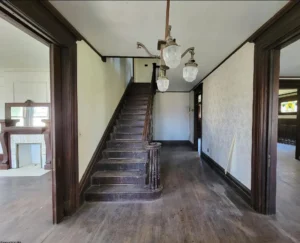

A Changing Landscape: The Rise of Industry
By 1900, West Virginia had already begun to undergo a dramatic transformation from a largely agrarian society to one dominated by industrial pursuits. The discovery of vast coal reserves throughout the Appalachian Mountains was the catalyst for this shift. Coal mining quickly became the backbone of the state’s economy, with vast mining operations springing up across southern and central West Virginia.
At the turn of the century, West Virginia was one of the nation’s leading coal producers, with major mines in counties such as Kanawha, Boone, and Raleigh. The coal mines attracted thousands of laborers from all over the country, but especially from Eastern and Southern Europe, leading to the state becoming a melting pot of ethnic groups. Immigrants from Italy, Poland, and Eastern Europe flooded into the state, drawn by the promise of jobs and the promise of steady pay in the mines.
The coal boom also brought with it the rise of powerful industrialists, most notably the infamous John D. Rockefeller, who invested heavily in West Virginia’s burgeoning oil and gas industry. As the state’s coal reserves continued to be tapped, the demand for oil and natural gas grew, contributing further to the transformation of the state’s landscape. This new industrial world, however, was not without its challenges.



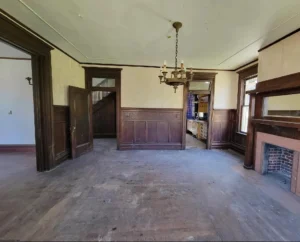
Labor Unrest and Worker Struggles
While coal mining brought prosperity to the state, it also brought with it harsh working conditions and labor unrest. The miners often worked long hours in dangerous conditions for little pay. Many of the mines were owned by large corporations, and workers were often forced to live in company towns, where they paid high rents for substandard housing, bought goods from company stores at inflated prices, and were frequently in debt to the mine owners.
This system led to widespread dissatisfaction and frequent strikes. The labor movement in West Virginia during this period was one of the most intense in the country, with miners organizing in an effort to improve their conditions. Some of the most famous labor struggles in the state’s history took place around 1900, including the Paint Creek-Cabin Creek Strike of 1912-1913, a few years after the 1900 period. However, the simmering tensions leading up to these struggles were already apparent.
West Virginia became known for violent confrontations between miners and the forces of industry. These clashes were epitomized by events such as the “Mingo County War” in 1920, which, though outside of the immediate 1900 timeframe, had roots in the struggles for workers’ rights that had been developing in the previous decades.




The Decline of Agriculture and the Rise of Towns
Agriculture in West Virginia was still important in 1900, but it was slowly giving way to industrialization. Many of the state’s rural farms had been struggling for years due to poor soil quality, lack of adequate transportation, and the difficulty of making a living in such a mountainous landscape. By the end of the century, this long-standing agricultural economy was being replaced by urbanization and industrial growth.
The state’s urban centers, such as Charleston and Wheeling, saw rapid growth at the turn of the century, though they were still small in comparison to the great industrial cities of the Northeast. These towns became the epicenter of the state’s industrial economy, with coal, steel, and timber companies setting up shop, attracting new workers and residents.
While much of West Virginia’s population lived in rural areas in 1900, the rapid expansion of the coal industry started to change this. New railroads were built to transport coal to market, and as these railroads cut through the mountainous terrain, they also made it easier for people to travel and settle in once isolated regions. Towns and cities sprang up almost overnight, driven by the insatiable demand for coal and timber. Charleston, the state capital, was particularly shaped by this growth, emerging as the center of political and economic power in the state.


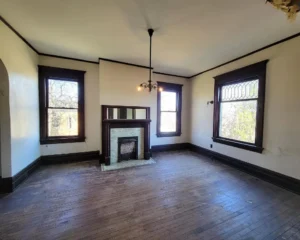
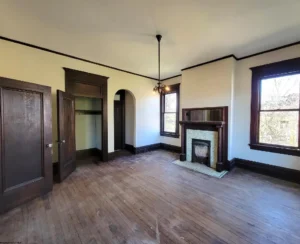
The Challenges of Isolation and Infrastructure
One of the most significant challenges facing West Virginia in 1900 was its isolation. The rugged mountain terrain that made the state so beautiful also made it difficult to develop an efficient infrastructure. Roads were poorly maintained, and transportation of goods and people was often slow and costly.
Railroads had begun to connect the state to the rest of the nation, but even by 1900, many of the mountain communities were still cut off from the outside world. For many West Virginians, the arrival of the railroad represented both a symbol of progress and a necessary tool for economic development. The expansion of railroads brought new opportunities but also highlighted the vast divides between urbanized, industrial areas and rural, agrarian communities.


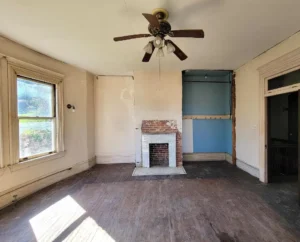

This isolation also contributed to a sense of cultural independence. West Virginians were fiercely proud of their mountain heritage, which, in the face of the encroaching industrial world, became a symbol of resistance to change. This tension between the old rural culture and the new industrial society was at the heart of many debates within the state.
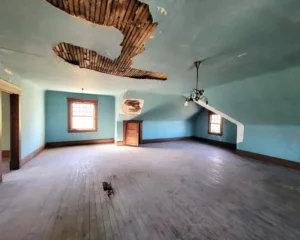


Someone go save this house! It has had a price reduction! The house was built in 1900. It is located on .55 acre in Clarksburg, West Virginia. This sure could be a grand house! The house features a covered front porch, hardwood floors, vintage light fixtures, stained glass, pocket doors, crown moulding and wainscoting. There are transom windows, leaded glass and a claw foot tub. The third floor was a ballroom. Three bedrooms, two bathrooms and 4,147 square feet
At the turn of the century, West Virginia was one of the nation’s leading coal producers, with major mines in counties such as Kanawha, Boone, and Raleigh. The coal mines attracted thousands of laborers from all over the country, but especially from Eastern and Southern Europe, leading to the state becoming a melting pot of ethnic groups. Immigrants from Italy, Poland, and Eastern Europe flooded into the state, drawn by the promise of jobs and the promise of steady pay in the mines.
Beautiful! Where is it located in W.VA though?